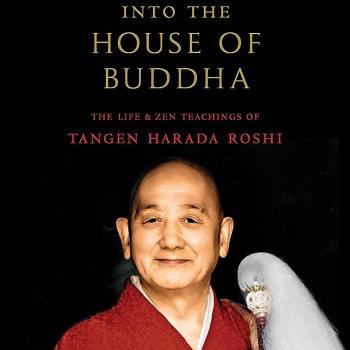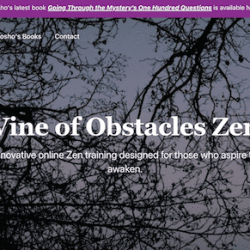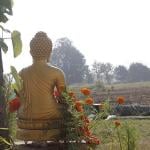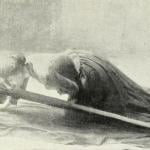Although my legal name is “Dosho” and for me it is an important aspect of priest practice to use my dharma name, at work I go by “Mike.” Sometimes I wish that I’d also introduced myself as “Mike” when I moved here a few years ago rather than have my neighbors struggle with “Doshu,” “Dusho,” and “Dush-ho”
Listening to my small group of students, I know I’m not alone in sometimes feeling my life is cut in two – Zen and daily life. Everybody knows that practice and daily life are not two. In all honesty though, monastic/sesshin/escape nostalgia packs a whollop in the midst of navigating the rocky road of making money, raising kids, and paying the mortgage (while health care costs soar, home values plummet, etc.). The assault on the middle class, as Lou Dobbs would put it (sorry, too much CNN).
Enter the earthworm koan. In the assembly of Chang-sha, Minister Chu asked, “An earthworm is cut in two pieces; the two pieces are both moving. In which piece do you think Buddha-nature exists?”
This is the topic of the Thursday night study group. There’s more to it but I’ll limit myself to this bit for now.
In living a divided life, like an earthworm cut in two, are we assuming that it was just one piece prior to its being cut? “Such expressions as ‘one’ and ‘two’ should be thoroughly investigated through practice,” says old Dogen-z.
Now don’t blow this off as some kind of mind-game Zen thing. That isn’t what it is.
If you can pick up this one, I’m confident that you’ll find that it is really good Zen. Doesn’t matter if you be really smart or really stupid, you can still work with “one” and “two.” It is more basic than elementary school.
One.
Two.
Like a good friend, Dogen is trying to help us direct our inquiry to play freely in the one and the two. Moping around trying to discern if our daily life is sacred or if we’re in spiritual crisis, fretting about the sacredness of our stinky spiritual life … those are mind roads that just leave us spinning.
Really, was your life “one” before it became “two”?
Or is it for you like it is for a student who said, “I’ve never felt that my life was one. That’s why I practice Zen.”
If so, for you too, then, what is the one that you are trying to piece together from this divided life?
Along these lines, over tea this morning, we read aloud parts of Barry Magid’s new book Ending the Pursuit of Happiness: A Zen Guide (what I heard sounds really good) about our “secret practice:”
“We imagine, ‘If only I could get rid of those bad parts of my self, everything would be OK.’ Or maybe I have to get rid of my ‘self’ entirely! Then ‘I’ get entangled in the paradox of me wanting to get rid of ‘me.’ …How many of us are there, and which side am I on? How did I end up in so many pieces? The fundamental dualism we face on the cushion is not some metaphysical abstraction, it is the all too down-to-earth experience of a person divided against herself in pursuit of a curative fantasy.”
Dogen’s simple advice is to make it our practice to investigate the basics: “one” and “two.” The curative fantasy too becomes the field of inquiry.
What do we have to lose?












